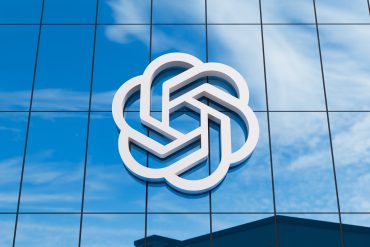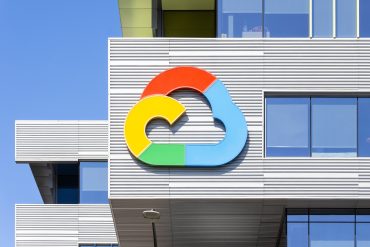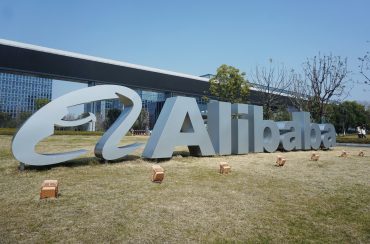
- AI
OpenAI Unifies AI Models into GPT-5, Offers Free Standard Access
6 minute read

OpenAI’s GPT-5 platform combines advanced AI models into a streamlined system, offering standard access at no cost
Key Takeaways
- OpenAI consolidates AI models into unified GPT-5 launching this summer, combining reasoning capabilities from O-series with multimodal functions from GPT-series to eliminate user confusion and streamline workflows.
- Free unlimited access to GPT-5 at standard intelligence level aims to democratize advanced AI and challenge competitors like Google’s Gemini, while premium tiers offer enhanced capabilities for ChatGPT Plus and Pro subscribers.
- $500 million training costs per GPT-5 run highlight the capital-intensive nature of frontier AI development as the LLM market projects growth from $7.77 billion in 2025 to $123 billion by 2034.
Introduction
OpenAI announces a strategic consolidation of its artificial intelligence models into a single, unified GPT-5 system set to launch this summer. The company plans to merge its reasoning-focused O-series with the multimodal GPT-series, eliminating the current confusion caused by multiple overlapping models with complex naming conventions.
This move represents a significant shift in OpenAI’s product strategy, as the company seeks to simplify its offerings while maintaining technological leadership. The unified approach addresses widespread user frustration with the current model picker system in ChatGPT, which requires users to choose between different specialized models for various tasks.
Key Developments
OpenAI’s model lineup has grown increasingly complex over recent years. The company currently operates reasoning-focused models in its O-series, including o1, o3, and o3-mini, alongside multimodal GPT models like GPT-4o and GPT-4o Mini. This fragmentation has created user confusion and operational inefficiencies.
Romain Huet, OpenAI’s Head of Developer Experience, acknowledges the complexity: “We know that our model names have become quite complex to follow along, with o3, o4-mini, GPT-4, GPT 4.1 and so on.” The company’s solution involves creating an “all-in-one” model that automatically leverages the best tools for any given task.
CEO Sam Altman confirms the strategic pivot on social media, stating the company wants AI to “just work” for users. OpenAI has scrapped plans to release its standalone o3 model, instead channeling resources into the unified GPT-5 platform. The company plans to release GPT-4.5, code-named “Orion,” as its final non-chain-of-thought model before the GPT-5 launch.
Market Impact
OpenAI’s announcement directly targets the competitive landscape dominated by Google’s Gemini and emerging players like DeepSeek. The promise of free unlimited access to GPT-5 at a standard intelligence level represents a significant market disruption, potentially expanding OpenAI’s user base at competitors’ expense.
The large language model market demonstrates explosive growth potential, with projections indicating expansion from $7.77 billion in 2025 to over $123 billion by 2034. This represents a compound annual growth rate of nearly 36%, driven primarily by North American investments and digital infrastructure development.
Despite rapid expansion, market fragmentation remains significant. OpenAI, Google, and Microsoft each control less than 2% of total market share, suggesting substantial room for growth and innovation. However, the extreme capital requirements for frontier model development may limit long-term competition to the largest technology companies.
Strategic Insights
GPT-5’s agent capabilities signal a fundamental shift from conversational AI to proactive business tools. The model’s ability to integrate with CRM systems and automate complex business processes positions it as a decision support system rather than simply a chatbot.
The democratization of advanced AI through free access could accelerate innovation across sectors. Startups, researchers, and enterprises gain access to state-of-the-art models without prohibitive costs, potentially spurring new applications and business models.
Training costs for GPT-5 reach approximately $500 million per run, according to BleepingComputer, highlighting the capital-intensive nature of frontier AI development. This financial barrier creates a moat around the industry’s leading players while potentially limiting future competition.
Expert Opinions and Data
Jerry Tworek, a VP at OpenAI, emphasizes that GPT-5 aims to improve overall model efficiency while enhancing capabilities across all functionalities. The foundational model advances multimodality, reasoning, context windows, and personalization without requiring users to switch between specialized models.
“The breakthrough of reasoning in the O-series and the breakthroughs in multi-modality in the GPT-series will be unified, and that will be GPT-5,” Huet explains. This integration promises to deliver superior performance across text, images, audio, and video processing within a single interface.
Altman’s commitment to offering “unlimited chat access at a standard intelligence setting” reflects OpenAI’s confidence in the model’s capabilities and economic viability. Premium subscribers will access higher intelligence levels, creating a tiered value proposition that balances accessibility with revenue generation.
Conclusion
OpenAI’s GPT-5 initiative represents a strategic consolidation designed to simplify user experience while maintaining technological leadership. The company’s decision to offer free access to advanced AI capabilities directly challenges competitors and could reshape market dynamics across the technology sector.
The enormous financial stakes and technical challenges underscore the capital-intensive nature of frontier AI development. OpenAI’s bold approach intensifies competitive pressure on rivals, likely accelerating product roadmaps and strategic responses throughout the industry as companies seek to maintain relevance in the rapidly evolving AI landscape.








